On the Road is a weekday feature spotlighting reader photo submissions.
From the exotic to the familiar, whether you’re traveling or in your own backyard, we would love to see the world through your eyes.
arrieve
I don’t really have many pictures from Cusco, so this is the final set.
Like Machu Picchu, Ollantaytambo was built by Pachicuti, the ruler who established the Inca Empire in the mid-1400’s. (After he wiped out the original inhabitants, of course. It’s easy to admire what the Incas created without having any illusions about them being Good Guys.) It’s about an hour’s drive from Cusco, and was both a ceremonial and agricultural center and Pachicuti’s royal estate.
After the murder of Atahualpa, this was used as a fortress by Manco Inca, and was the site of the only victory of the Inca army against the Spaniards.
In some ways these ruins were more surprising than Machu Picchu. It’s a fortress sitting in the middle of a village (where some of the houses and streets were also built by the Incas). You just pull into a parking lot and suddenly you’re in the 15th century.
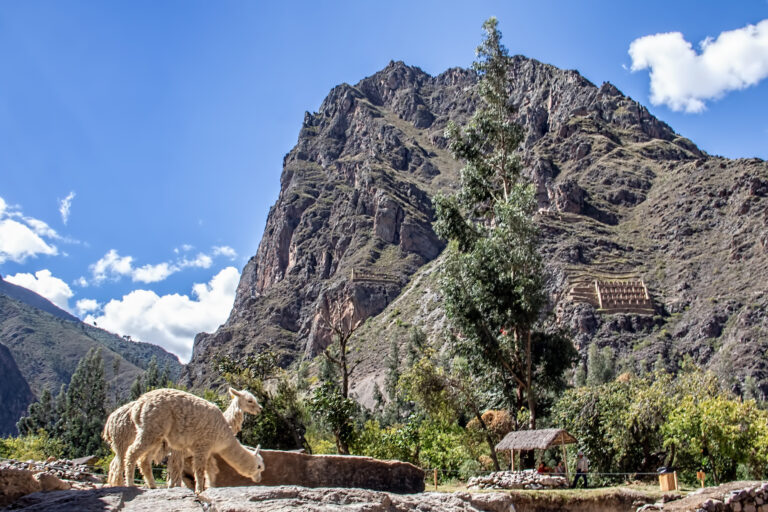
A few of the locals wandering through the ruins. (Any excuse to feature more pictures of alpacas.)
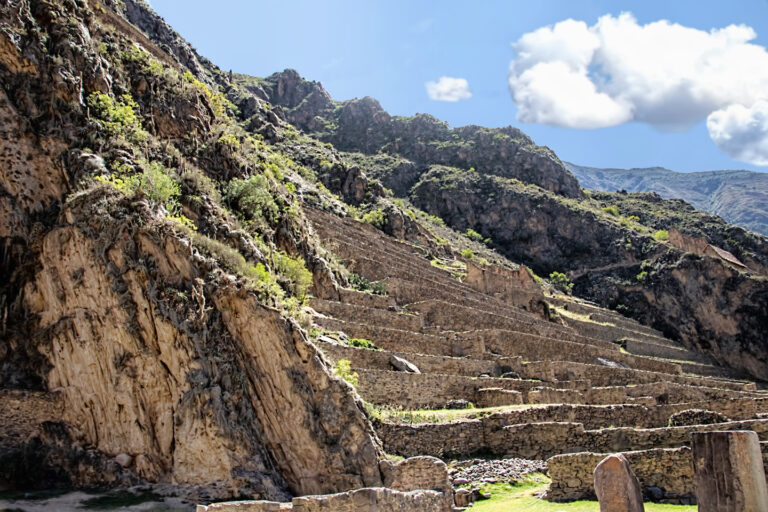
The main site is a series of terraces and stone walls surrounding an esplanade. The Incas did love those terraces. You see them everywhere through the Andes.
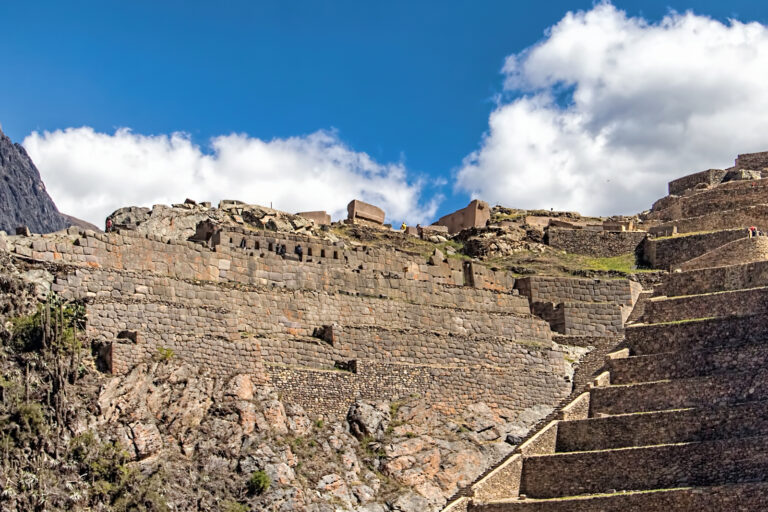
The buildings at the top of these terraces are the remains of the fortress,
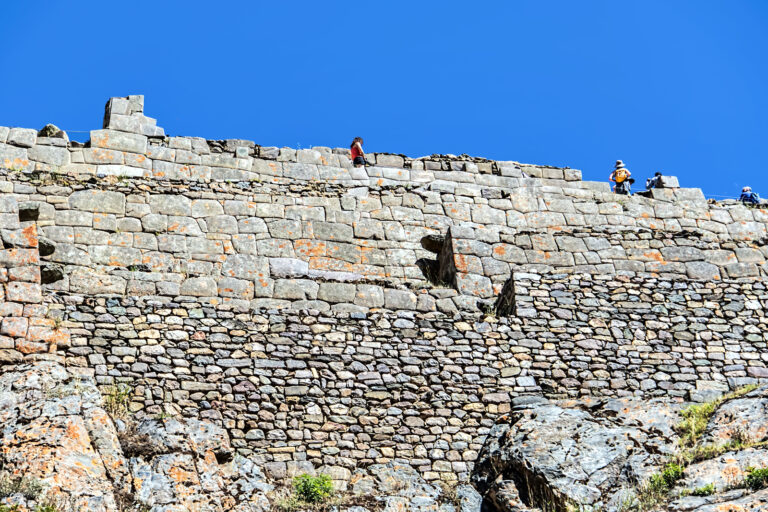
You can see both types of Inca stone construction in these walls: the more common “stack a bunch of fieldstones on top of each other” that you can see almost anywhere in the world, and the very precise, shaped and fitted ashlar masonry. Which, remember, were created using only stone tools and bronze knives. This wall isn’t nearly as precise as some of them, as the stones are all different sizes, but it’s still impressive.
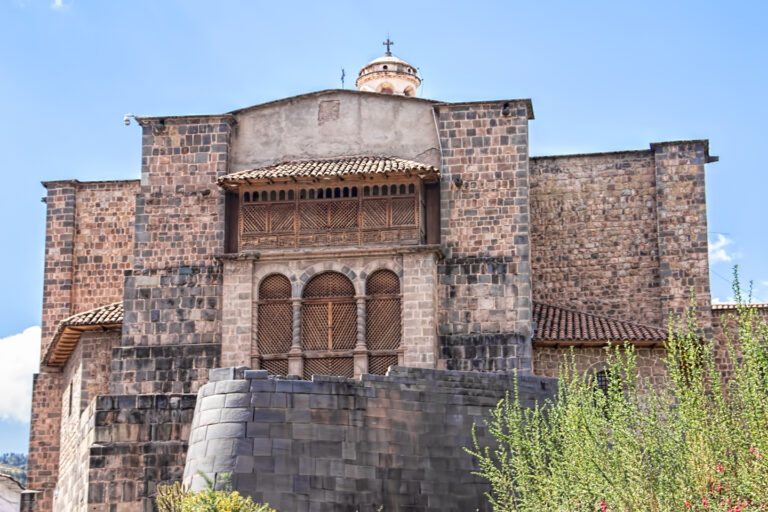
Since I was talking about Incan masonry, here’s one picture from Cusco. This is the Koricancha, the most important temple in the Inca Empire. The conquistadors destroyed it, and took many of the stones to build their own houses and churches, but they kept the foundation and built the Convent of Santo Domingo on top of it.
You can see how beautiful the Incan foundations are. They survived the earthquakes that destroyed the first convent, and severely damaged the second.
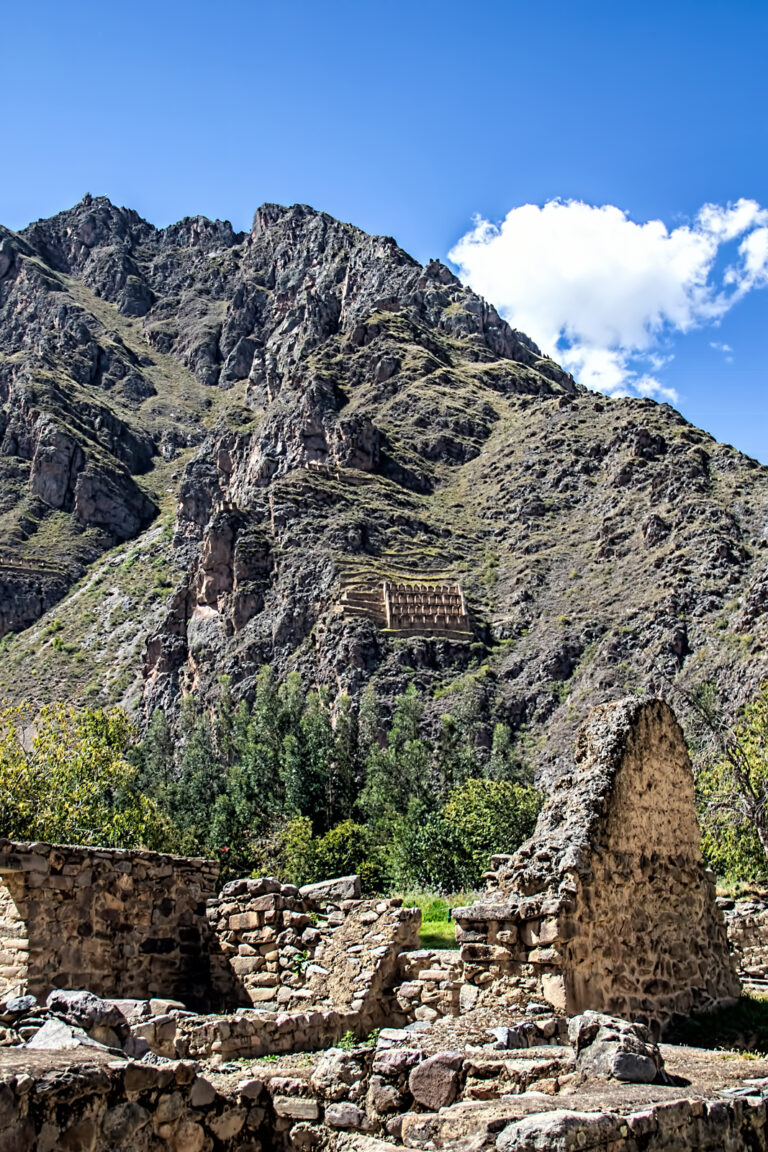
There are also some ruins on this mountain, which towers over the site, but we had neither the time nor the inclination to get a closer look (at least speaking for myself—climbing up the stairs next to the terraces was enough for me.)
The structures that look like tiers of bleacher seats were used for food storage; the cold dry air up there helped to preserve it.
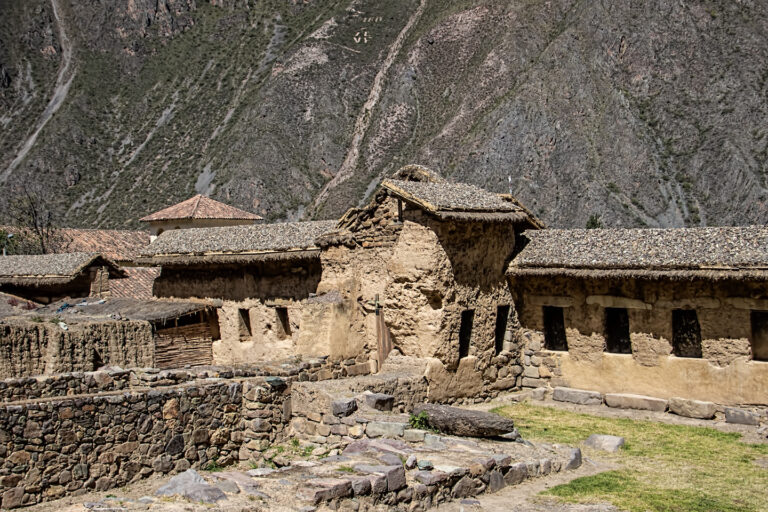
Buildings on the esplanade.
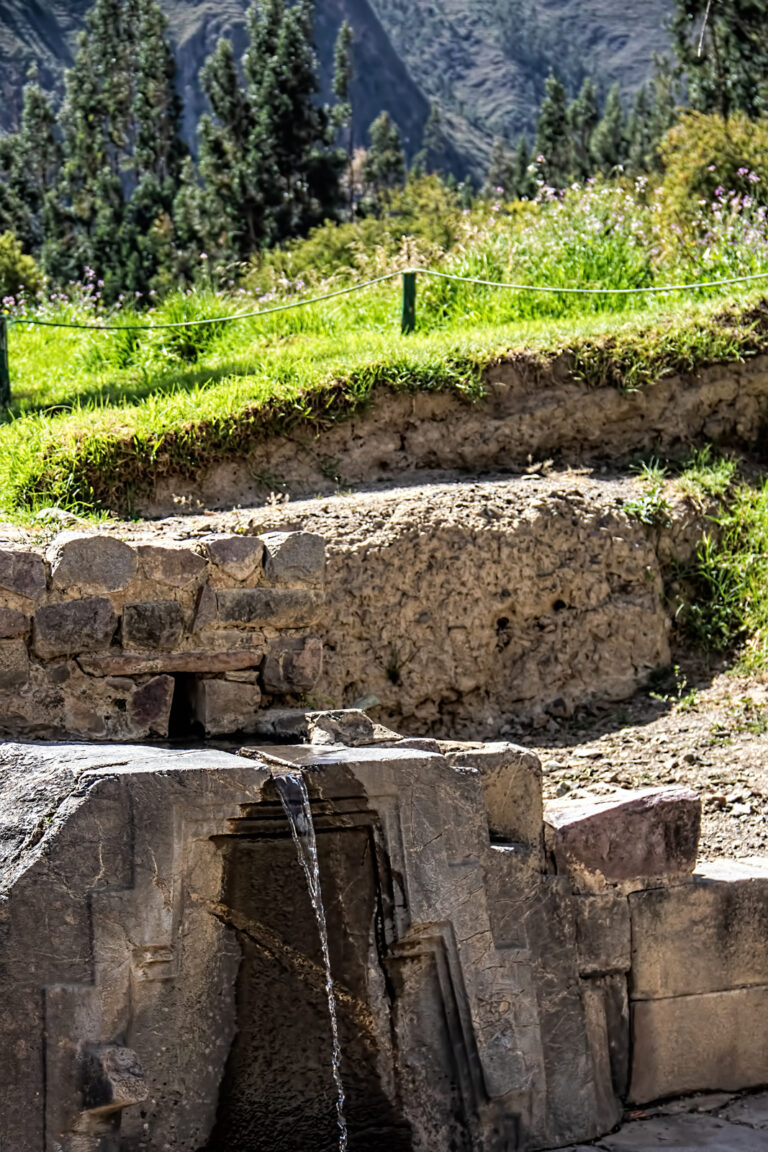
This fountain–one of many at the site–is called the Nusta Bathtub, or the Princess Bathtub. I don’t who the Princess was, but she bathed in style.
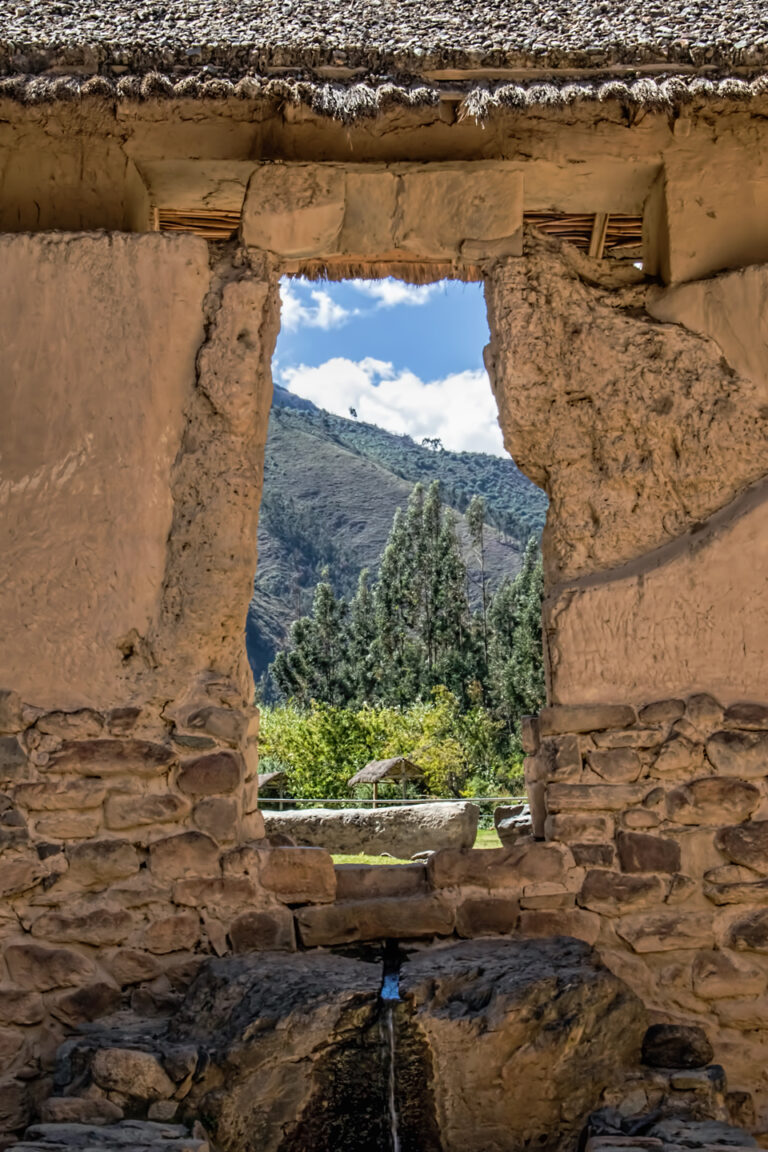
This is the Water Temple, and another ceremonial fountain.
And that’s it for my trip to Peru. Despite the altitude sickness, and the side effects of the meds for altitude sickness (I bailed on the last day in Cusco and went back to Lima because of them) I am already trying to figure out how I can handle acclimation better so I can go back.

OzarkHillbilly
Cool shit. thanx for all, arrieve.
BretH
Definitely makes me want to go there, thanks for the journey!
Benw
Amazing! Thanks for sharing
randy khan
Some of the stone for Ollantaytambo (IIRC, the enormous blocks used for the Temple del Sol at the top) was quarried at a mountain across the nearby river. They dragged it down that mountain, ferried at across the river and then dragged it up the mountain on the side where the site was built. Just a crazy amount of work.
Betty
Very impressive.
pieceofpeace
OK, now I’m for sure I’m on envy overload. And feel enriched by viewing and reading about this culture.
Stunning depictions of life lived by and for the Inca people, who produced this wealth of resourcefulness! And your commentary
You must be proud of all the pictures, with focus points angled or emphasized so well.
Thank you for this exciting, uplifting series. I’ve enjoyed it a great deal.
stinger
I have so enjoyed this series of photos and stories! Thanks, arrieve!
wombat probability cloud
Thanks so much for the wonderful photos and narrative.
Miss Bianca
Come hang out in Colorado for a month or two beforehand – that might help get you acclimated!
SkyBluePink
Very magical series- thanks for sharing.
kindness
Acclimation to elevation. There are a couple places in the Rockies above 10,000 feet you could stay at a week or two before going to Peru again. I’m told it takes almost a month for our bodies to add the extra red blood cells needed for thin air. And most of us don’t really have a couple extra weeks (nor the funding) to do a pre holiday holiday.
Mike in Pasadena
I enjoyed your Peru photos because you captured so many things I’ve never seen. Excellent.
StringOnAStick
@kindness: Wise advice!
Excellent photos and informative, thank you for sharing.
arrieve
Thanks for all the kind comments. I found Peru so magical, and I’m glad I managed to convey some of that magic.
way2blue
arrieve. I love your fourth photo showing the stone wall developing a ‘sag’ as it was built. So the stone masons stuck in a couple lenses of smaller rocks to even out the higher rows. How they fixed the ‘oops’ made me smile… Thanks.
lige
The village is pretty amazing. Seemingly a perfectly preserved stone town of the Incan era with a grid of stone streets and houses with small waterways along each street and all still in use. My recollection is only the roofs and upper walls of the various structures are new with everything else dating from Incan times.
jeepers
If you have the opportunity you should also go to Pisaq and saksaywaman.